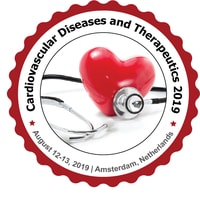M S Kamenskikh
Saint - Petersburg State University, Russia
Title: The role of myocardial revascularization in the survival of patients with altered coronary blood flow detected by transthoracic ultrasound
Biography
Biography: M S Kamenskikh
Abstract
Myxofibrosarcoma is one of the most common soft-tissue sarcomas arising in the limbs of elderly patients. Description of this tumor in the literature reported that the commonest sites for metastases are lymph nodes and lungs, but no case reports to date describe solitary metastasis to the heart from peripheral myxofibrosarcoma lesions.
Herein, we present the first case report of metastasis of peripheral myxofibrosarcoma to the heart of a 53-year-old female with equivocal non-invasive and -invasive diagnostic tests, in whom the final diagnosis was made through exploratory surgery.
The positron emission tomography???computed tomography scans and cardiac magnetic resonance imaging revealed the mass in the right atrium as well as allowing an in-depth insight in tumour growth, size, site and extent. Echocardiographic evaluation was beneficial in confirming the tumour and predicting clinical outcome.
Unfortunately transvenous endomyocardial biopsies of the tumour were nondiagnostic. Thus a more invasive but diagnostic approach to the right atrial mass was required via an open surgery, to obtain a definitive histological diagnosis. This case demonstrates the complexity of pairing multi-modality imaging and invasive techniques to achieve tissue characterization and diagnosis. Despite advances in multimodality investigations and increasing treatment options, the case presented a number of diagnostic and management challenges. Further translational studies are warranted to improve the diagnostic yield and choice of therapy.

